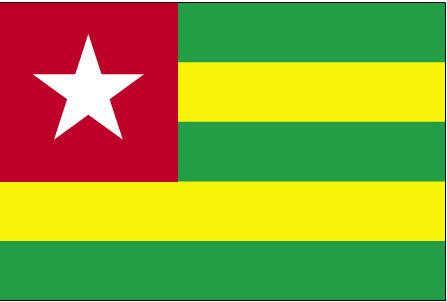To help inspire or plan your trip to Togo, some of its major attractions
for travellers are shown below, including some of the best natural, historical, cultural and adventure sites in the country.
These include all of UNESCO World Heritage Sites for Togo which represent the best
of the world's cultural and natural heritage.
Click on the icons below to focus on specific types of features
(click again to return to all).
|
|
|
|
|
|
|
|
|
|
|
|
 |
|---|---|---|---|---|---|---|---|---|---|---|---|
| Natural | History | Wildlife | Trekking | Cities | Religious Monument | Boat Journey | Rail Journey | Diving | Cultural | Adrenaline | UNESCO WHS |
| Lome | |
|---|---|
Lome, Togo's capital, is a remarkable mix of colonial architecture and native culture. French, German and British settlers have left some grandiose buildings to admire while the country's history and culture can be explored at the National Museum with exhibits such as potteries, costumes, wood carvings and traditional musical instruments and medicinal remedies. Lomo's real attractions are its markets however, in particular the fetish market (Marché des Feticheurs) at Akedessewa where supplies for traditional medicines used by witch doctors can be found, including skulls of monkeys, snake skins, warthog teeth, lion and leopard skin and dried birds. | |
| Lake Togo | |
|---|---|
Lake Togo lies east of the capital Lome and covers some 13 km². Travelling on pirogue, the traditional dugout canoe used by local fishermen, you can visit various towns and villages along the lakes edge such as Agbodrafo and Togoville, which are centres for voodoo culture. The historic town of Togoville contains a royal palace and German colonial church from the early 20th century as well as numerous voodoo shrines and fetish stalls. | |
| Kloto Forest | |
|---|---|
Kloto Forest, near the town of Kpalime, is located north of Lome. This mountainous region is covered in dense forest with numerous streams and waterfalls. It's a great place for a hike through pristine wilderness and local guides can take you on a butterfly safari to point out some of the 500 species that reside in the forest. | |
| Koutammakou, the Land of the Batammariba | |
|---|---|
The Koutammakou landscape in north-eastern Togo covers some 500 km² and is home to the Batammariba. Their remarkable mud tower-houses, known as Takienta are a symbol of Togo and represent some of the most beautiful examples of traditional African architecture still existing. The towers are fortified dwellings which contain granaries and living quarters and are grouped into villages which also include ceremonial spaces. UNESCO World Heritage Site: Koutammakou, the Land of the Batammariba | |

